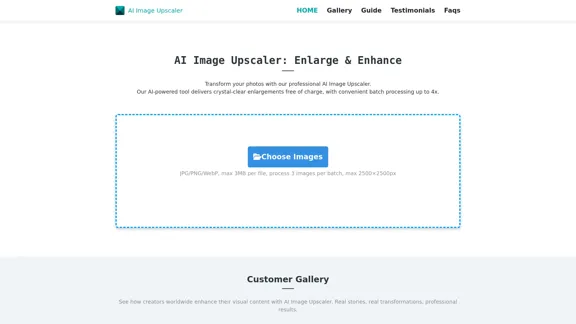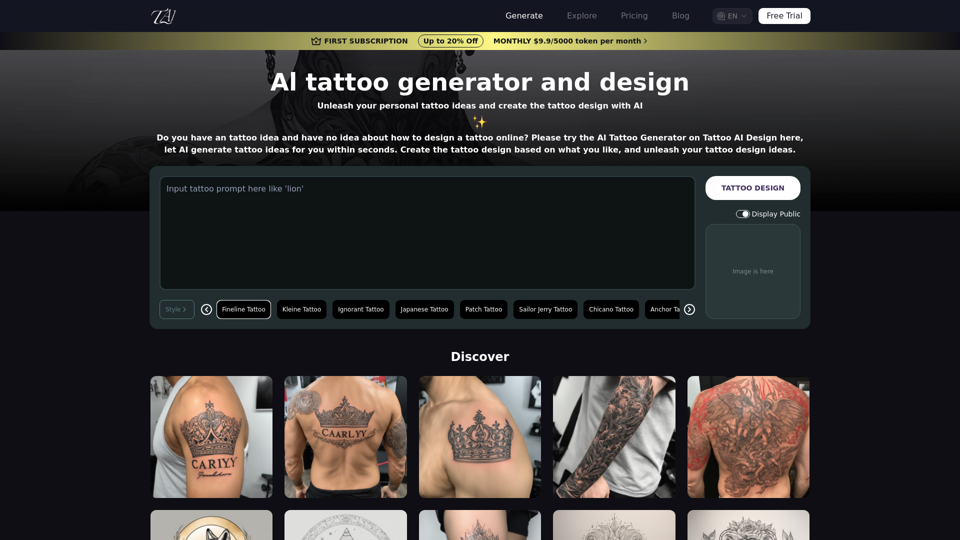FLUX Fill is a state-of-the-art AI image inpainting and outpainting solution that revolutionizes image editing. It offers advanced capabilities for both professionals and developers, enabling seamless manipulation of images by removing unwanted elements, adding new features, or expanding canvas boundaries. The technology ensures natural, context-aware results, making it a preferred choice over existing solutions.
FLUX Fill: Advanced AI Solution for Image Inpainting and Outpainting
FLUX Fill provides professional-quality AI image inpainting and outpainting. Change your images with smooth edits and natural extensions.
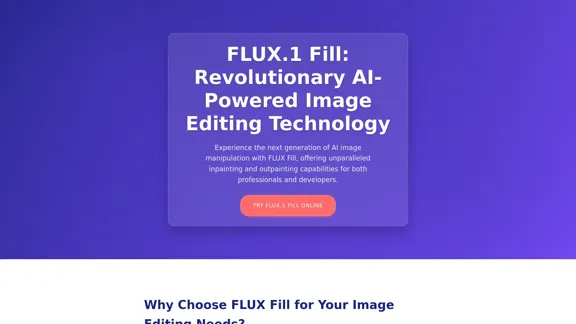
Introduction
Feature
-
Advanced Inpainting and Outpainting
FLUX Fill excels in inpainting and outpainting, allowing users to make smooth edits that blend seamlessly with existing images and expand them beyond their original edges.
-
Intelligent Style Transfer
The tool can transform clothing styles while preserving lighting, shadows, and fabric textures, ensuring a natural look.
-
Text Modification
Users can modify text in complex scenes without losing the surrounding context, maintaining lighting effects and reflections.
-
Context-Aware Expansion
FLUX Fill intelligently expands images while keeping consistency with the original composition, enhancing the overall visual appeal.
-
Performance Metrics
Independent benchmarks show that FLUX Fill maintains superior image consistency and natural transitions compared to other solutions.
-
Professional and Developer Editions
The platform offers a Professional Edition for maximum performance and a Developer Edition optimized for integration into applications.
How to Use?
- Use high-resolution source images for better quality outputs.
- Provide clear and detailed text prompts for complex edits.
- Start with smaller edits and gradually expand for better control.
- Maintain consistent lighting and perspective descriptions in your prompts.
FAQ
What makes this tool different from other AI image editors?
FLUX Fill utilizes advanced neural networks specifically trained for seamless image editing, offering superior context awareness and natural results compared to traditional AI image editors.
Can I use it for commercial projects?
Yes, the Pro version is licensed for commercial use, while the Dev version has specific licensing terms for commercial implementation.
Does FLUX Fill support batch processing?
Yes, FLUX Fill Pro supports batch processing through its API, allowing efficient processing of multiple images.
What image formats does FLUX Fill support?
FLUX Fill supports common image formats including JPG, PNG, and WEBP, optimizing input images for the best results.
Price
-
Professional Edition: Maximum performance and advanced features through the Black Forest Labs API.
-
Developer Edition: Open-weight version optimized for developers, available under the Flux Dev License.
The price is for reference only, please refer to the latest official data for actual information.
Evaluation
FLUX Fill showcases impressive capabilities in AI image editing, particularly in inpainting and outpainting. Its ability to maintain lighting and context makes it a powerful tool for professionals in photography and digital art. However, users may face a learning curve in mastering the tool's advanced features. While it excels in many areas, further improvements could enhance user experience, particularly in simplifying the editing process for beginners. Overall, FLUX Fill is a robust solution for advanced image manipulation, though it may require a deeper understanding of image editing principles for optimal use.
Latest Traffic Insights
Monthly Visits
664
Bounce Rate
40.96%
Pages Per Visit
1.06
Time on Site(s)
0.00
Global Rank
-
Country Rank
-
Recent Visits
Traffic Sources
- Social Media:4.69%
- Paid Referrals:1.37%
- Email:0.46%
- Referrals:13.38%
- Search Engines:44.73%
- Direct:34.49%
Related Websites
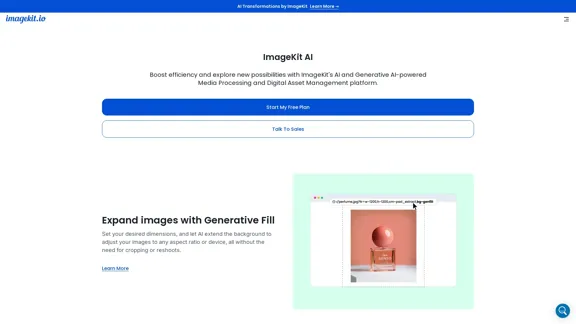
ImageKit AI for media delivery and management | ImageKit.io
ImageKit AI for media delivery and management | ImageKit.ioLeverage AI and Generative AI to transform media processing and digital asset management at scale with ImageKit AI.
1.06 M
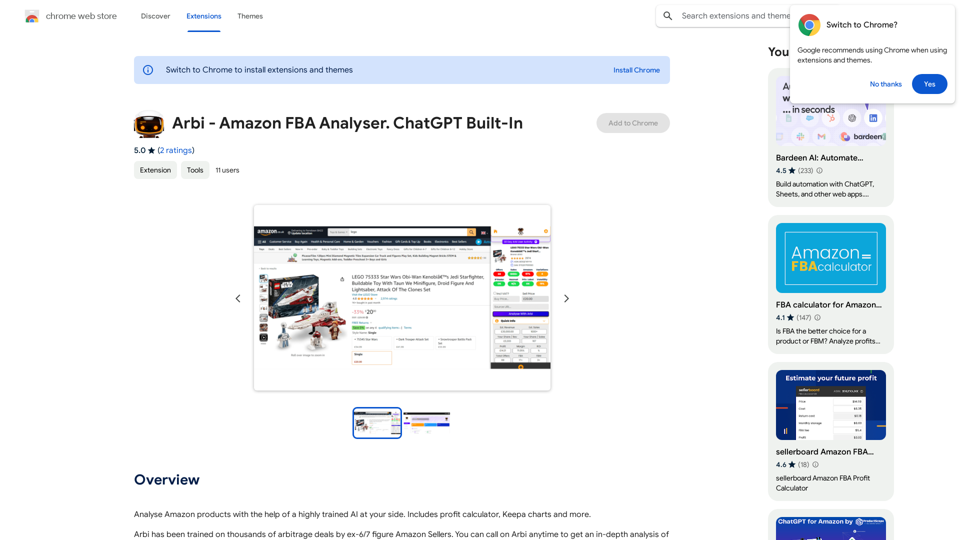
Analyze Amazon products with the help of a powerful AI assistant. Features include a profit calculator, Keepa charts, and more.
193.90 M

Meet Dating Photo AI - the only tool that helps you increase your dating profile matches by making you look like the best version of yourself. By applying the latest AI techniques, we make you get the matches that you deserve.
831
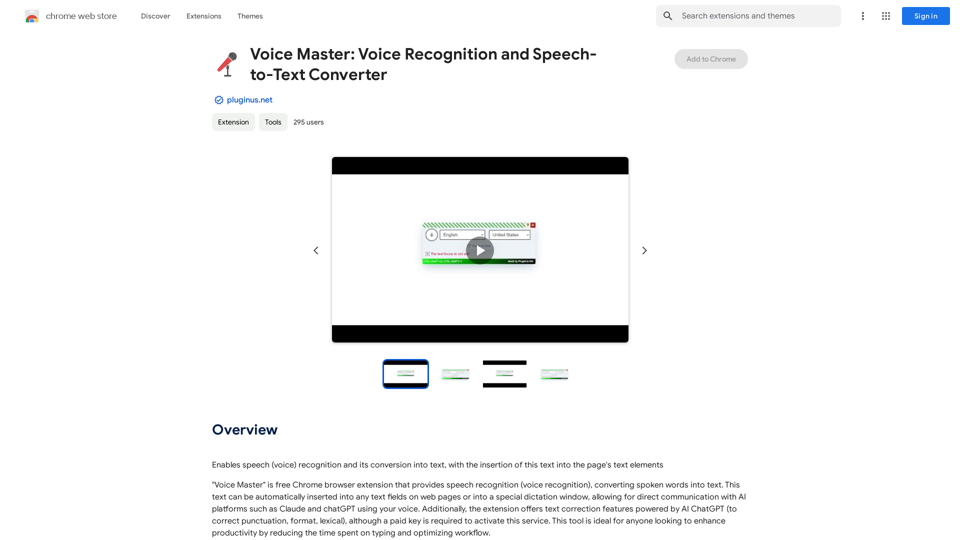
Voice Master: Voice Recognition and Speech-to-Text Converter
Voice Master: Voice Recognition and Speech-to-Text ConverterAllows you to speak and have your words recognized as text, which is then added to the text parts of the webpage.
193.90 M
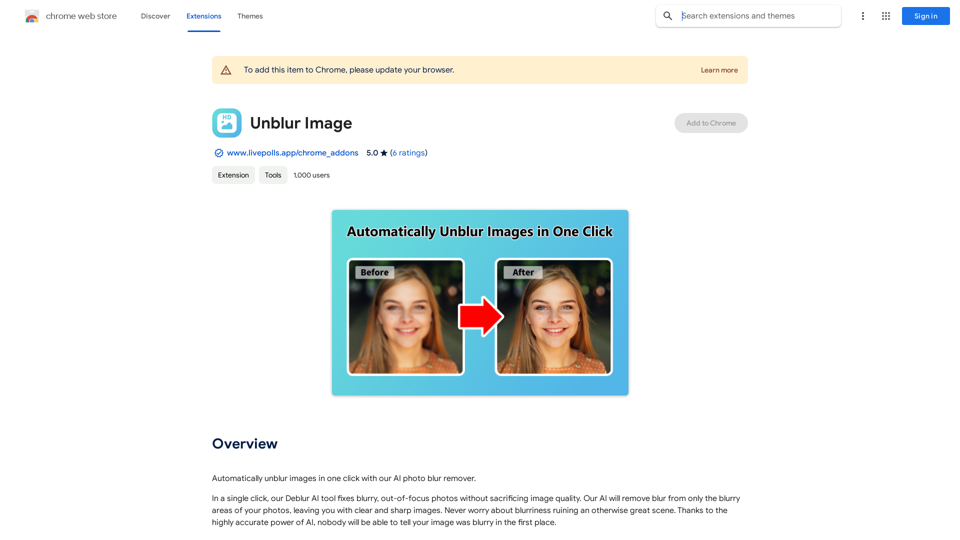
Unblur Image Unblur image refers to the process of removing blur or haze from an image to make it sharper and clearer. This technique is often used to enhance the quality of images that have been affected by camera shake, motion blur, or other factors that cause blur.
Unblur Image Unblur image refers to the process of removing blur or haze from an image to make it sharper and clearer. This technique is often used to enhance the quality of images that have been affected by camera shake, motion blur, or other factors that cause blur.Automatically unblur images in one click with our AI photo blur remover.
193.90 M
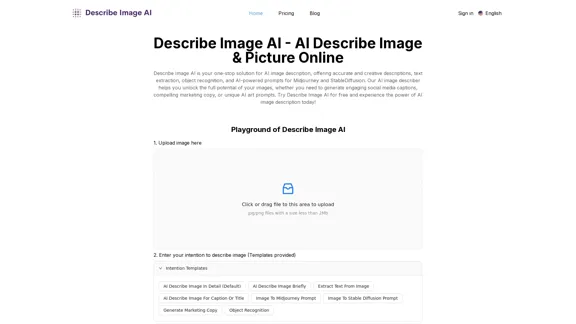
AI Describe Image & Picture Online, Free Trial This title describes an online service that uses artificial intelligence to analyze and describe images or pictures. The service offers a free trial period for users to test its capabilities. The AI technology can likely generate text descriptions of the visual content in uploaded images, helping users understand or categorize their pictures automatically.
AI Describe Image & Picture Online, Free Trial This title describes an online service that uses artificial intelligence to analyze and describe images or pictures. The service offers a free trial period for users to test its capabilities. The AI technology can likely generate text descriptions of the visual content in uploaded images, helping users understand or categorize their pictures automatically.Describe Image AI: Accurately describe images online using AI. Our image describer generates image descriptions, AI picture descriptions, text extraction, social media captions, and prompts for Midjourney & StableDiffusion. Free Trial!
5.16 K
